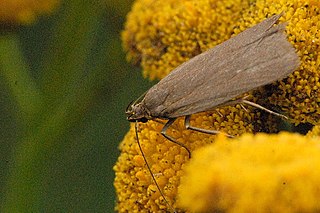
Scrobipalpa acuminatella is a moth of the family Gelechiidae. It is found in most of Europe, as well as Turkey, southern Siberia, Central Asia and China (Anhui). It was recently reported from Canada, with records from Ontario and Québec.

Recurvaria leucatella is a moth of the family Gelechiidae. It is found in most of Europe, Turkey, Central Asia and the Caucasus.

Syncopacma cinctella is a moth of the family Gelechiidae. It is found in all of Europe, Asia Minor and North Africa. In the east, the range extends through Siberia to the Russian Far East.

Stigmella confusella is a moth of the family Nepticulidae. It is found from Fennoscandia to the Pyrenees, Alps and Bulgaria and from Ireland to central Russia.
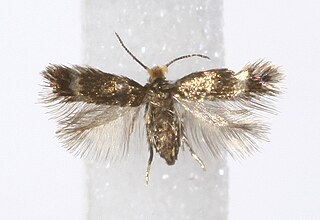
Stigmella betulicola is a moth of the family Nepticulidae. It is found in most of Europe, east to the eastern part of the Palearctic realm.

Ectoedemia rubivora is a moth of the family Nepticulidae. It is found from Fennoscandia to the Pyrenees, Italy and Serbia, and from Ireland to central Russia and Ukraine.

Stenolechia gemmella is a moth of the family Gelechiidae. It is known from most of Europe

Nemophora cupriacella is a moth of the family Adelidae that is found in most of Europe.
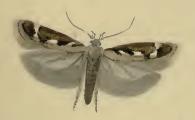
Caryocolum marmorea is a moth of the family Gelechiidae. It is found from Scandinavia to the Mediterranean islands, and from Ireland to Poland, Hungary and Greece. It is also found on the Canary Islands and Madeira. It is also found in North America.

Caryocolum tricolorella is a moth of the family Gelechiidae. It is found from Fennoscandia to the Pyrenees, Alps and Romania and from Ireland to Russia and Ukraine.

Eulamprotes wilkella is a moth of the family Gelechiidae. It is found in most of Europe. Outside of Europe, it is found in Turkey, the Caucasus and Siberia.
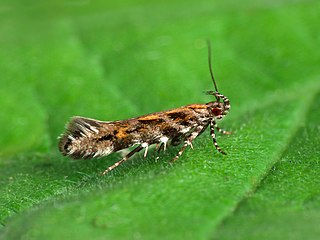
Aristotelia ericinella is a moth of the family Gelechiidae. It is found in most of Europe, except most of the Balkan Peninsula.

Helcystogramma rufescens is a moth of the family Gelechiidae. It is found in most of Europe.
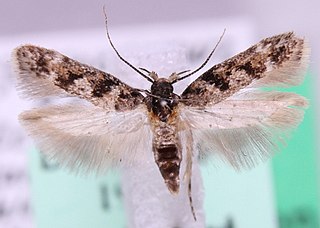
Caryocolum alsinella is a moth of the family Gelechiidae. It is found throughout Europe It is also present in North Africa.

Chionodes fumatella, the downland groundling, is a moth of the family Gelechiidae. It is found in almost all of Europe. Outside of Europe, it is found in Turkey, the Caucasus, Mongolia and from Siberia to the Russian Far East.

Ptocheuusa paupella, the light fleabane neb, is a moth of the family Gelechiidae. It is found from central and southern Europe to the Ural Mountains. It is also found in Turkey and India.

Teleiodes luculella, the crescent groundling, is a moth of the family Gelechiidae. It is found from Europe to the southern Ural and Transcaucasia. The habitat consists of woodlands, including oak woodlands.

Gelechia rhombella, the apple groundling, is a moth of the family Gelechiidae. It is found in Europe, the Caucasus, Transcaucasia, southern Siberia, the Russian Far East, Korea and China.

Scrobipalpa atriplicella, the goosefoot groundling moth, is a moth of the family Gelechiidae. It is found from most of Europe throughout Asia to Kamchatka and Japan. It is an introduced species in North America.

Eulamprotes unicolorella, the unmarked neb, is a moth of the family Gelechiidae. It was described by Philogène Auguste Joseph Duponchel in 1843. It is found in almost all of Europe. The habitat consists of wastelands and dry open areas.



















